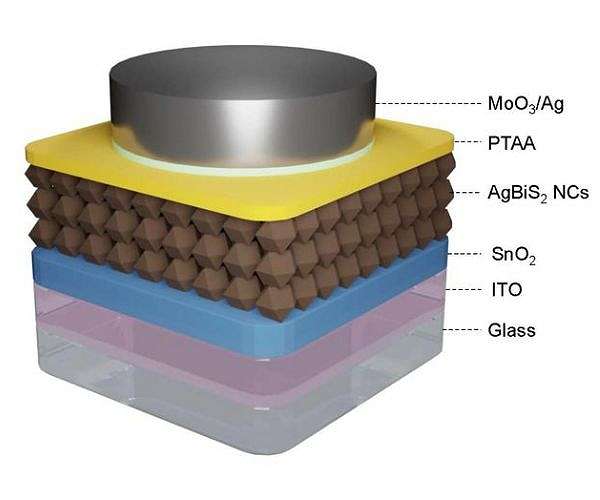New efficiency record set for environmentally friendly nanocrystal solar cells
As climate change accelerates the shift to renewable energy sources, solar cells are becoming increasingly important. For example, solar energy generation in Spain grew by 28% in 2023 compared to the previous year, contributing to 20.3% of the country’s total energy mix. However, despite their widespread use, solar cells still rely on materials that are not always environmentally sustainable. Expanding solar technology to a wider range of applications, such as powering buildings, infrastructure and vehicles, requires the development of flexible, lightweight and cost-effective solar cells.
Colloidal silver bismuth sulfide (AgBiS2) nanocrystals have recently emerged as a promising environmentally friendly material for ultrathin solar cells. These nanocrystals have an exceptionally high absorption coefficient, but current production techniques for such solar cells are based on multi-step processes that are expensive and inefficient. A new one-step approach using nanocrystal inks could streamline production, but defects on the nanocrystal surfaces have limited efficiency.
To tackle this problem, researchers from the Institute of Photonic Sciences (ICFO), led by ICREA Prof. Gerasimos Konstantatos, developed an innovative post-deposition in situ passivation (P-DIP) technique. This method improves surface passivation, leading to nanocrystalline ink films with superior optoelectronic properties. Their work, published in “Energy and Environmental Science,” achieved an energy conversion efficiency of approximately 10%, surpassing the performance of previous AgBiS2-based solar cells.
Dr. Jae Taek Oh, the study’s first author, explained the importance of surface passivation: “Imagine a bumpy road that slows down cars. Surface passivation is like re-paving the road, making it smoother so cars can move without getting stuck In our case, removing surface defects is very important to facilitate the transport of charge carriers created by light absorption in nanocrystal films.”
The research team’s P-DIP strategy improved the quality of the nanocrystal films by addressing surface defects, leading to a significant increase in efficiency. By using a multifunctional molecular agent containing chlorine, they were able to stabilize the nanocrystals and ensure even dispersion in the solution, resulting in smooth film coatings and improved carrier transport.
This combination of techniques has set a new performance record for sustainable, environmentally friendly solar cells.
Research report:Post-deposition in situ passivation of AgBiS2 nanocrystal inks for high-efficiency ultra-thin solar cells


